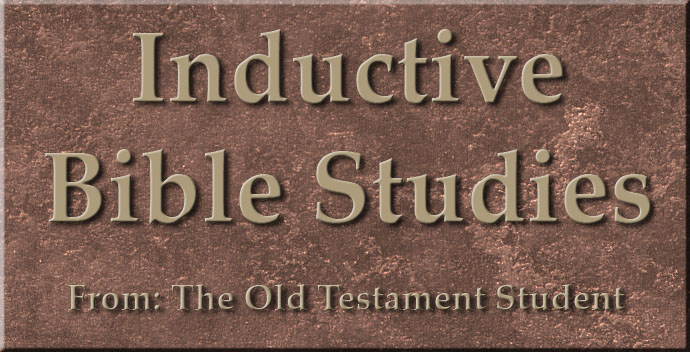
Inductive Bible Studies,
[Copyright by W. R. HARPER, 1887.]
PREPARED BY PROFESSORS W. R. HARPER (Yale University), W. G. BALLANTINE (Oberlin Theol. Sem.), WILLIS J. BEECHER (Auburn Theol. Sem.), and G. S. BURROUGHS (Amherst College).
|
Thirty-Eighth and Thirty-Ninth Study (In One).—Jeremiah. [The material of this "study" is furnished by Professor Harper.]
I. PRELIMINARY NOTES. 1. There is much uncertainty concerning the order of Jeremiah's prophecies. The book contains undoubted evidence of having been edited by some one living after the time of the prophet. And in this book, as in others, the principle of arrangement, whether of the original writer or of the editor was not the chronological principle. 2. In view of this fact and also of the length of the book, the effort in these " studies " will be to lead the student only to a very general conception of the material, and thus to prepare the way for more detailed work, should there be a desire on his part to pursue it further. 3. The following works will be found most helpful: Geikie, Hours with the Bible, vol. 5, chs. vii-xx; Smith, Bible Dictionary, articles Jeremiah, Josiah, Jehoiakim, etc.; Streane, Jeremiah and Lamentations; Cambridge Bible for Schools and Colleges; Cheyne, Pulpit Commentary on Jeremiah; also, article on Jeremiah in Encyc. Britannica; Keil, Jeremiah, two volumes. 4. The length of these " studies" should not be determined from their external form. A study of their contents will show that a large amount of work is called for. II. BIBLICAL LESSON. 1. Read ch. 1:1-3 and ascertain
2. Read ch. 1:4-10 and study the call of Jeremiah
3. Read chs. 1:11-20:16, containing prophecies uttered, for the most part, from the time of the call (13th year of Josiah) to the battle of Carchemish (4th year of Jehoiakim), and arrange the material in a general way under the following heads:
4. Read chs. 21:1-25:14, miscellaneous prophecies directed at different times against kings and prophets, analyze the material, and consider especially
5. Read ch. 25:15-38, and compare it later with chs. 46-51. 6. Read chs. 26-29, containing Jeremiah's words of warning (26:1-6), his impeachment and defence (26:7-15), result of the trial, comparison of other cases (26:16-24); Jeremiah's warning to the neighboring nations (27:1-11), to Zedekiah, the priests and people (27:12-22), to the false prophets (28:1-17) that Babylon shall hold long sway over Judah; his letter to the exiles that there shall come release, but not till after seventy years (29:1-14); the rebuke of false prophets in Babylon (15-32). 7. Read chs. 30,31, containing prophecies of comfort and hope, and classify the different representations which they contain of deliverance, prosperity, peace. 8. Read chs. 32-44, containing a history of the events of the two years before the capture of Jerusalem, and of Jeremiah's labors during that and the following periods (chs. 35 and 36 not chronologically arranged). Classify the material under the following heads:
9. Read ch. 45, a supplementary notice of Baruch concerning an important episode in his life. 10. Read chs. 46-51, the prophecies against foreign nations, viz., Egypt, Philistia, Moab, Ammon, Edom, Damascus, Kedar and Hazor, Elam, Babylon; compare with similar prophecies of
11. Read ch. 52, an historical appendix, describing
III. GENERAL TOPICS. From the material thus gathered, aided by such books as may be within reach, consider the following topics: 1. Jeremiah's Life
2. Jeremiah's Persecutions.
3. Jeremiah's Character.
4. Jeremiah's Style.1
5. The Arrangement of Materials.
|
|
 |
 |
|
1) See especially Streane, Jeremiah, Introduction, pp. 28-30
|
|
-
Site Navigation
 Home
Home What's New
What's New Bible
Bible Photos
Photos Hiking
Hiking E-Books
E-Books Genealogy
Genealogy Profile
Free Plug-ins You May Need
Profile
Free Plug-ins You May Need
 Get Java
Get Java.png) Get Flash
Get Flash Get 7-Zip
Get 7-Zip Get Acrobat Reader
Get Acrobat Reader Get TheWORD
Get TheWORD